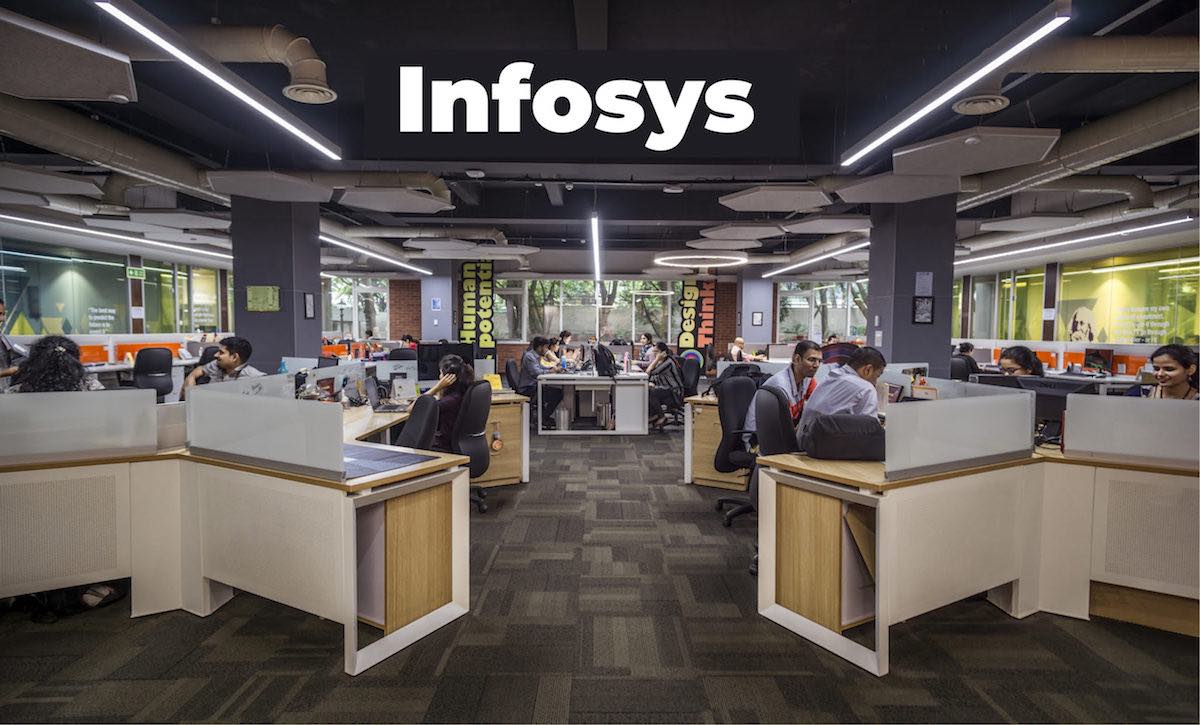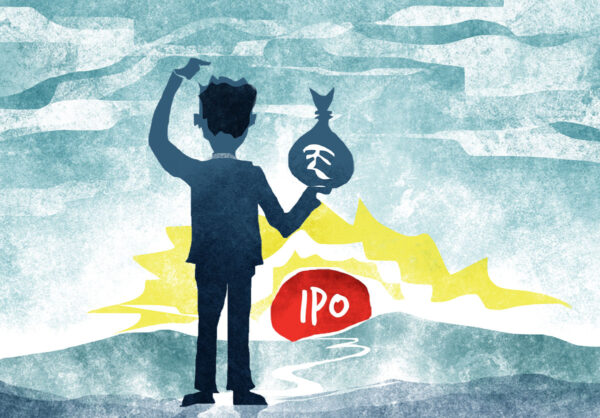The Era Of Copycat Startups Where Originality Takes A Backseat Is Finally Claiming Its Victims; What Are The Reasons For Indian Startup Bubble Burst And Why Are Most Startups Eager To Launch Their IPOs?
Indian Startup ecosystem, which once shone like a star, is today on the verge of becoming a black hole, and the story of rapid funding, aggressive expansion, and eventual downfall is all too common. As we examine the common narrative of once-promising entrepreneurs, we uncover a tale that sheds light on the dark underbelly of the startup ecosystem in India—financial irregularities, a lack of corporate governance, and the consequences of unchecked hubris. Taking the example of perhaps one of India's early startups, Infosys, which was bootstrapped and then, through hard work and careful business considerations, became the giant that it is today, has a lot to teach today's entrepreneurs who are willing to gun for IPOs when their businesses are a dud and pass on the losses to the retail investors!

The Magical Beginnings Of Indian Startups
The once-rosy picture of Indian startups, fueled by exuberant funding and boundless optimism, is beginning to show its cracks. The recent low tide of funding has exposed an unsightly underbelly—financial irregularities, forensic auditing, a glaring absence of corporate governance, and a reckoning with the consequences of unchecked hubris.
Today, the once-flying entrepreneurs have fallen; for many, it is a hard fall. Herein, we gain insights into why Indian startups are stumbling despite the hoopla surrounding their massive funding.
The Start
Our journey begins with entrepreneurs who embarked on their maiden ventures in the early 2010s; all think they have a disruptive idea strongly backed by investors; the early days seemed like magic.
Quick funding, enthusiastic consumer response, and rapid expansion created an illusion of invincibility; the entrepreneur was living the dream, but the real magic show had yet to begin.

The Illusion of Endless Growth
Venture capitalists (VCs) played a pivotal role in the startup’s trajectory. They encouraged reckless spending, offering assurance that funding would always be available. However, at the same time, the mandate was evident: “You have to be the biggest in your segment”, and this relentless pursuit of scale led to unsustainable business models.
The founder’s ambition soared as more funds poured in and the venture expanded aggressively, and all across the market, the entrepreneur started to be regarded as a magician as the startup achieved a perfect product-market fit, soaring revenues, and a skyrocketing valuation.
The Vanishing Act
However, cut to 2022— 23, the startup ecosystem hit a funding drought; raising capital became arduous, leaving many startups with a dwindling runway.
Our entrepreneur was no exception. Forced to undertake layoffs, cut expenses, and downsize operations, the startup was on life support. The once-magical journey came to an abrupt end.
The Blame Game
The founder faced harsh accusations from VCs, who labelled him a trickster responsible for years of reckless spending; he vehemently denied any financial wrongdoing, and thus, the lines between magic and trickery in the startup world had blurred.

Unmasking a Series of Scandals
2023, the Indian startup ecosystem is grappling with a series of alleged financial irregularities. The GoMechanic case in January highlighted the perils of prioritizing growth at all costs over responsible financial reporting. Subsequent cases involving Byju’s, 4B Networks and Mojocare and several more exposed similar issues—unsustainable business models, market factors, and financial irregularities
VCs’ Role in the Unraveling
Many founders-turned-VC point out that while founders may not be blameless, VCs also share responsibility. The intense focus on rapid growth, disregard for financial red flags, and excessive valuation inflation are practices perpetuated by both sides and what contributes to this culture is the short-term nature of VC investments and the pursuit of outsized gains building the culture of unchecked expansion.
Ethical Dilemmas
The debate around ethics and integrity within the startup ecosystem intensifies. Some argue that founders must maintain strong ethical foundations, while others assert that VCs bear a significant responsibility to guide startups ethically.
Hence, the recent controversies have accentuated the need for better corporate governance and regulatory frameworks.

Froth Leads to Fraud
Critics argue that VCs often encourage aggressive growth tactics like “growth at all costs” and “fail fast, scale fast,” even at the expense of ethical business practices, and this excessive funding during boom times sets the stage for fraudulent behaviour when the funding tide recedes.
However, are the above points the sole contributing factors?
No, because a concerning trend has emerged—one where originality seems to be taking a backseat, making way for what many now refer to as “copycat startups.”
These ventures are often seen replicating successful business models, ideas, or concepts from established companies, both domestically and internationally. At the same time, imitation has always been a part of entrepreneurship; however, the prevalence of copycat startups in today’s ecosystem raises questions about innovation and creativity.
The Rise of the Clone Culture
Today’s startup ecosystem is brimming with clone or “me-too” startups that mimic the strategies and offerings of proven market leaders.
The phenomenon is particularly prominent in industries such as e-commerce, food delivery, ride-sharing, and fintech; instead of charting new territories and pioneering innovative solutions, these startups replicate existing business models with minor tweaks or adaptations.
The Urge for Quick Wins
One of the driving forces behind the proliferation of copycat startups is the desire for quick wins. Entrepreneurs and investors are drawn to business models that have already demonstrated success elsewhere, e.g. the early days of Snapdeal, which started on the Groupon business model and found no takers.
This replication mindset is often motivated by the belief that if a concept worked in one market, it will work in another, thus minimizing risk and increasing the chances of rapid growth.
Globalization and Market Convergence
The increasing globalization of markets and the convergence of consumer preferences have facilitated the spread of successful business models across borders.
Startups from one part of the world are inspired by the achievements of their counterparts in different regions and seek to emulate their strategies, hoping to tap into a similar consumer base.

The Downside of Copycat Startups
While there may be short-term benefits to copycat startups, such as reduced risk and a potentially faster path to profitability, there are several downsides to this approach:
1. Lack of Innovation: Copycat startups often lack genuine innovation; they do not bring new ideas or technologies to the table, which can hinder long-term sustainability.
2. Intense Competition: The proliferation of identical business models leads to fierce competition within the same niche, resulting in price wars, decreased profitability, and limited differentiation.
3. Ethical Concerns: Copycat startups sometimes face ethical questions, especially when they blatantly replicate existing businesses’ intellectual property or brand identity without permission.
4. Vulnerability to Market Changes: Relying solely on imitation makes startups vulnerable to market changes and disruptions and struggle to adapt when the original business model faces challenges, e.g. what happened to most edu tech companies after the pandemic.

The Value of Authentic Innovation
In contrast to the copycat trend, truly innovative startups bring fresh ideas, disruptive technologies, and creative solutions to the market. They redefine industries, challenge the status quo, and drive progress. While innovation may involve more risk and uncertainty, it has the potential for greater long-term rewards.
Balancing Imitation and Innovation
While there is a place for both copycat startups and innovative ventures in the startup ecosystem, striking a balance between imitation and innovation is crucial.
Copycat startups can find success by identifying gaps in existing markets and improving upon existing models, but true originality remains a valuable driver of progress and long-term sustainability.
The startup landscape thrives when diverse entrepreneurs are encouraged to explore new frontiers and challenge conventional thinking, ensuring that innovation remains at the heart of entrepreneurial endeavours.

Overvaluation, The Illusion of Success
One of the fundamental reasons behind the downfall of many Indian startups is overvaluation.
The intoxicating infusion of funds often leads to an inflated sense of worth, and Startups with a modest track record suddenly find themselves with valuations that far exceed their actual value. This overvaluation creates unrealistic expectations, leading to reckless spending and an unsustainable pace of growth.
Profligate Spending, Burning Through Cash
The mantra of “burning cash to grow faster” has become a norm in the startup world; while some level of spending is necessary for expansion, many Indian startups have taken it to an extreme.
Lavish marketing campaigns, excessive hiring, and an extravagant lifestyle culture among founders have drained resources rapidly. This spendthrift behaviour often leads to an early depletion of funds, leaving startups vulnerable during funding downturns.
)
Basking in the Glory, The Cult of Founders
Founders often find themselves caught in the whirlwind of their own success.
The adulation, media attention, and the cult of personality that surrounds them can be intoxicating and lead to a sense of invincibility and a detachment from the ground reality of running a sustainable business.
Instead of staying grounded and focused on building a robust business model, some founders become enamoured with their own celebrity status.
No Revenues, Weak Business Models, A Recipe for Disaster
A critical issue plaguing Indian startups is the obsession with growth at the expense of revenue generation and a sound business model.
Many startups aggressively chase user acquisition and market share but neglect to establish a clear path to profitability; relying on investor funding without a sustainable revenue stream makes them vulnerable to funding crunches.

The Startup That Flourished
Infosys, founded in 1981 by N.R. Narayana Murthy and his colleagues, did not receive traditional venture capital funding like many modern startups do today; instead, Infosys followed a different funding path:
1. Bootstrap and Personal Savings: Infosys was initially bootstrapped, meaning it was funded by its founders’ personal savings and a small loan from Narayana Murthy’s wife, Sudha Murthy. The founders invested their own money and relied on their expertise and hard work to build the company.
2. Client Contracts: The early growth of Infosys was primarily driven by securing contracts from clients. The company focused on providing quality IT services to clients, and the revenue generated from these contracts was reinvested in the business.
3. IPO (Initial Public Offering): Infosys went public in 1993 with its initial public offering on the Indian stock market. This IPO was a significant milestone for the company, and it allowed early employees and investors to monetize their equity stakes simultaneously it also provided Infosys with the capital needed for expansion.
4. Global Depository Receipts (GDRs): In 1999, Infosys became the first Indian company to issue Global Depository Receipts (GDRs) on the international market. GDRs are a way for companies to raise capital from global investors. This move helped Infosys raise additional funds to fuel its global growth.
5. Secondary Offerings: Over the years, Infosys conducted multiple secondary offerings to raise capital; these offerings involved issuing additional shares to the public markets, which provided the company with the financial resources needed for investments and expansion.
While Infosys did not rely on traditional venture capital funding, its path to growth was marked by its ability to secure client contracts, go public, and tap into international markets for capital. This approach allowed Infosys to become one of India’s most successful and globally recognized IT services companies.

Now compare the same to present-day startups and their business model.
Gunning for IPOs: Passing the Buck to Gullible Investors
One alarming trend is startups rushing towards initial public offerings (IPOs) to shift their financial burdens onto unsuspecting retail investors.
The Last Bit, Indian startups faltering despite massive funding, indicates the perils of unchecked hubris and unsustainable growth models.
Overvaluation, reckless spending, founder-centric cultures, weak business models, and the rush towards IPOs have collectively contributed to the unravelling of many promising ventures, and retail investors left high and dry, sitting on losses.
As the Indian startup ecosystem matures, founders and investors alike need to prioritize responsible growth, ethical practices, and a focus on building businesses that are not made on illusions but on solid foundations of sustainability, revenue, and profits.




